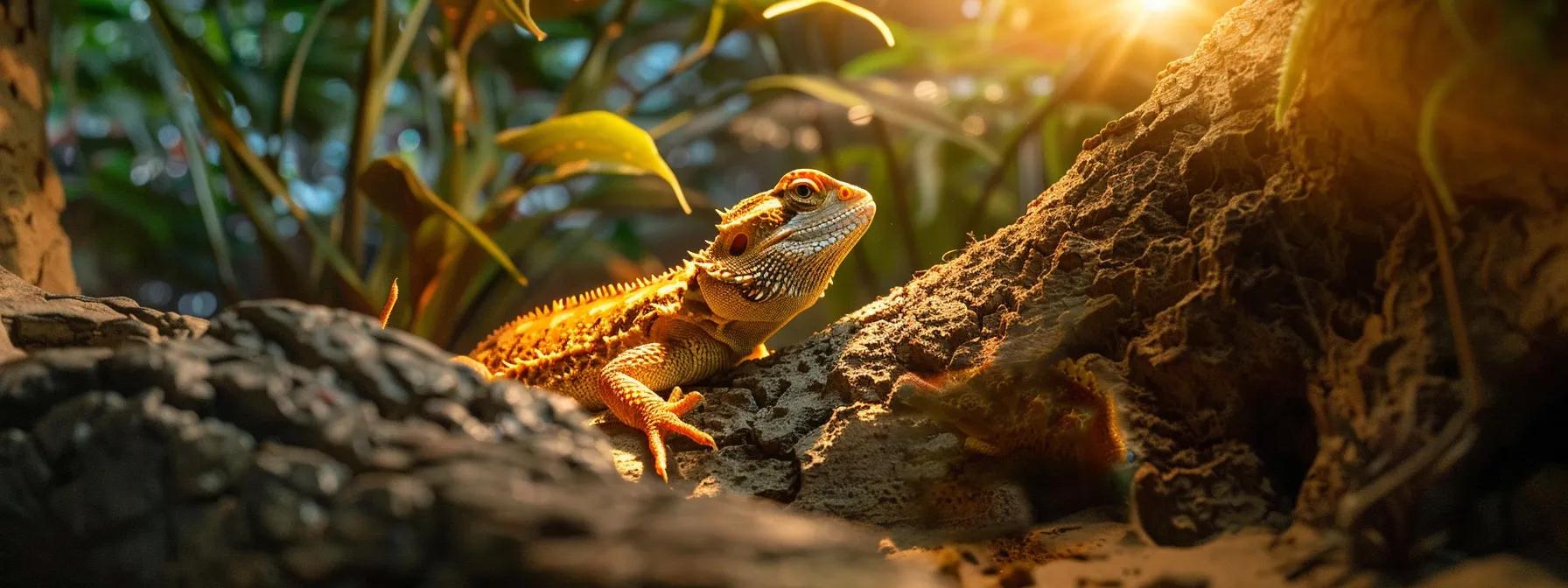
Essential Nutritional Needs for Bearded Dragons
In the realm of reptile care, bearded dragons have emerged as popular pets due to their manageable size, engaging personality, and forgiving nature. Their long-term health is deeply linked to a well-balanced, species-specific diet. Owners often struggle with identifying the core nutrient requirements, proper feeding practices, and the right supplements to support growth and overall well-being. This article examines the essential nutritional needs for bearded dragons by exploring macro- and micronutrient elements, feeder selection, plant inclusions, hydration strategies, and dietary adaptations through various life stages. Emphasizing scientific evidence and data, the discussion highlights the importance of nutrients such as protein, fats, carbohydrates, vitamins, and minerals like calcium and phosphorus in bone formation, energy regulation, metabolic health, and disease prevention.
Furthermore, with bearded dragons being omnivorous yet having unique dietary needs, the guidance here helps owners avoid pitfalls including metabolic bone disease, nutrient deficiencies, or over-supplementation. Real-world examples, dietary tables, and comprehensive lists provide expert advice for practical feeding schedules and shopping lists. As we explore nutrient contributions and tailored feeding strategies, it is evident that a synergistic dietary plan drives a bearded dragon’s health. Hydration is stressed—not only through direct water intake but also via food items that contribute fluid balance in the terrarium. Finally, the article reviews nutritional plans adapted for various life stages, from juveniles to seniors, equipping enthusiasts with fundamental strategies to optimize longevity and quality of life.
Understanding Core Nutrient Requirements for Bearded Dragons
Effective nutritional management begins with understanding core nutrient requirements. Macronutrients—proteins, fats, and carbohydrates—work together with micronutrients to support energy production, cell regeneration, and immunity. Protein is essential for muscle development and tissue repair during growth and after injuries. Fats provide concentrated energy and aid in the absorption of fat-soluble vitamins, while carbohydrates offer readily available energy for daily activities.
The Role of Protein in Growth and Health
Protein is critical for bearded dragons’ growth and overall health. In the wild, they consume protein-rich insects and plant matter that support muscle development and cellular repair. High-quality protein is especially vital during the juvenile phase for building lean muscle mass and assisting in immune stabilization and tissue repair. For example, gut-loaded mealworms and crickets supply amino acids and essential fatty acids. A balanced mix from varied sources—both animal and plant protein—ensures optimal growth, cognitive function, and disease resistance.
Fats and Carbohydrates in a Balanced Bearded Dragon Diet
Fats and carbohydrates are the foundation of energy supply. Fats support healthy skin, immunity, and absorption of vitamins A and D3. Insects and plant sources provide these fats for a gradual energy release required during feeding, hunting, and defensive actions. Carbohydrates, sourced from wild fruits and vegetables in nature, should be offered in controlled portions in captivity to avoid digestive issues and obesity. Proper ratios help stabilize blood sugar levels and contribute to an active, alert temperament.
Fiber's Contribution to Healthy Digestion
Although often overlooked, fiber is crucial for smooth digestion and gut motility. In bearded dragons, fiber mainly comes from leafy greens and fibrous vegetables, helping to prevent constipation and regulate the digestive tract. Additionally, dietary fiber supports a healthy balance of gut bacteria, enhances nutrient assimilation, and aids in weight management by providing satiety during meals.
Calcium and Phosphorus Balance for Strong Bones
A critical aspect of nutrition is the balance between calcium and phosphorus, which is vital for bone strength, muscle function, and metabolic regulation. In nature, these nutrients are obtained naturally, but in captivity, careful dietary planning and supplementation are often required. An ideal ratio of approximately 2:1 (calcium to phosphorus) is recommended to prevent metabolic bone disease and ensure proper calcium absorption. Foods like collard and turnip greens help maintain this balance, while regular ultraviolet exposure aids calcium utilization.
Vitamin D3's Function in Calcium Absorption
Vitamin D3 is indispensable for calcium absorption and bone health. It converts dietary calcium into a biologically active form, thereby supporting bone and muscle tissue formation. Adequate UVB light exposure or supplementation is essential; without it, even a calcium-rich diet may fail to prevent metabolic bone disease. Dusting live insects with vitamin D3-rich supplements is a common method to ensure sufficient intake.
Selecting Appropriate Insect Feeders for Optimal Nutrition

Choosing the right insect feeders is pivotal for a balanced diet. In the wild, bearded dragons consume a diverse range of insects rich in proteins, fats, vitamins, and minerals. In captivity, replicating this diversity is essential. High-quality, safely sourced insects support digestive and metabolic functions while minimizing the risks of pesticides or contaminants.
Identifying Safe and Nutritious Insect Species
Common insect choices include crickets, dubia roaches, mealworms, and superworms. Dubia roaches, for example, are prized for their low fat content and high digestibility, making them ideal for adult dragons. It is important to source insects from reputable breeders and ensure proper gut-loading to boost their vitamin and mineral content, including calcium and vitamin A. Additionally, selecting the appropriate insect size—smaller for juveniles and larger for adults—ensures safe consumption.
Gut-Loading Insects to Enhance Their Nutritional Value
Gut-loading is the process of feeding insects nutrient-dense foods prior to offering them to bearded dragons. This method enriches the insects with vitamins, minerals, and macronutrients, improving their contribution to the dragon’s diet by up to 40% in essential nutrients. Consistency and timing (typically 24 hours) in gut-loading with leafy greens (such as kale and collard greens) and vegetables (like carrots and squash) transform feeders into potent nutritional supplements.
Determining Correct Feeder Size and Quantity for Different Ages
Age-specific requirements determine both the size and frequency of insect feedings. Juvenile dragons require more frequent meals with smaller insects, such as small crickets or mealworms, to support rapid muscle and organ growth. Conversely, adult dragons benefit from larger insects like full-grown dubia roaches or superworms, fed less frequently to maintain stable energy levels and nutrient balance. Owners should adjust feeder size and quantity based on observations of body condition and seasonal activity trends.
Comparing Common Feeder Insects Like Crickets and Dubia Roaches
Both crickets and dubia roaches are popular feeder options; however, crickets tend to have a higher fat content, while dubia roaches offer a superior nutrient balance with lower fat and more protein. The comparative table below summarizes their key attributes:
| Insect Species | Protein Content | Fat Percentage | Girth/Size Suitability | Unique Benefits |
|---|---|---|---|---|
| Crickets | High | Moderate | Juvenile to Adult | Readily available, cost-effective, natural chitin fiber support |
| Dubia Roaches | Very High | Low | Adult-friendly | Superior nutrient balance, low odor, mess reduction |
| Mealworms | Moderate | High | Juvenile preference | Versatile feeder, can be gut-loaded effectively |
| Superworms | High | Moderate | Older juveniles | Excellent energy source, high protein when mature |
Regular monitoring of your pet’s response to various feeders is recommended, along with adjustments based on seasonal availability and overall health.
Incorporating Plant Matter Into Your Bearded Dragon's Diet
Alongside animal protein, introducing plant matter is key to a balanced diet. Although bearded dragons are primarily insectivorous when young, they gradually adopt a more omnivorous diet that includes vegetables and leafy greens. These plant foods supply essential vitamins, minerals, antioxidants, and fiber while also enhancing hydration and stimulating natural feeding behaviors.
Choosing Safe and Beneficial Vegetables and Leafy Greens
Safe vegetables include collard, mustard, dandelion, and turnip greens, which are rich in calcium and low in oxalates. They support bone development and promote efficient metabolism. It is advisable to rotate greens to provide a diverse nutrient profile and avoid potential imbalances. Organic, pesticide-free produce further minimizes gastrointestinal risks.
Offering Fruits Sparingly as Part of Their Nutritional Intake
Fruits, such as apples, berries, and melons, can offer antioxidants and hydration but should be given sparingly due to their sugar content. They serve best as occasional treats—no more than 10% of the total diet—to prevent metabolic imbalances or obesity. Removing seeds and peels that are hard to digest is recommended.
Preparing Plant-Based Foods for Easy Consumption
Proper preparation of vegetables and fruits can enhance digestibility. Finely chopping or lightly steaming vegetables such as leafy greens, carrots, or squash softens cell walls and aids nutrient extraction. This multi-stage preparation not only prevents choking hazards but also maximizes the nutritional value and supports smooth digestion.
Recognizing Plants and Vegetables to Avoid
Certain plants can be harmful. Foods like rhubarb and iceberg lettuce should be avoided due to high oxalate or low nutritional value. Similarly, avocado is toxic because of persin, and plants with high goitrogenic compounds may disrupt thyroid function. Always consult reliable sources or reptile nutrition experts when selecting new vegetables.
Ensuring Adequate Hydration for Bearded Dragon Well-Being

Proper hydration is fundamental for digestion, nutrient absorption, and thermoregulation. Since bearded dragons often live in arid environments, both in the wild and captivity, ensuring constant access to water is vital to prevent dehydration and related metabolic issues.
Recognizing the Signs of Dehydration in Bearded Dragons
Dehydration may present as sunken eyes, wrinkled skin, reduced activity, and thickened feces. More severe signs include loss of appetite and rapid weight loss, which can indicate impending health complications like kidney strain. Daily monitoring helps in early detection—a key step to prompt intervention.
Effective Methods for Providing Water
Water can be provided using shallow dishes placed in the enclosure to ensure easy access. Misting systems or regular sprays that mimic natural dew can attract the dragon to drink. Supplementary water-rich foods, such as cucumbers or melons, also contribute to the overall water intake. Regular cleaning of water containers is important to avoid bacterial buildup.
How Diet Contributes to a Bearded Dragon's Hydration
Including high-water-content vegetables and fruits like dandelion and collard greens can boost hydration levels. These foods, through their natural moisture and the metabolic water produced during digestion, supplement direct water intake and contribute to overall hydration.
The Importance of Regular Baths for Hydration and Shedding
Regular bathing in lukewarm water not only promotes hydration but also aids in shedding old skin. Baths lasting 10 to 15 minutes—once or twice a week—can improve circulation and reduce stress. Supervising these sessions ensures that the dragon benefits without the risk of chilling.
Adapting Nutrition for Different Bearded Dragon Life Stages
Bearded dragons require nutritional adjustments as they progress through life stages. The dietary focus shifts from rapid growth in juveniles to maintenance and disease prevention in adults and seniors.
Specific Nutritional Needs of Baby and Juvenile Bearded Dragons
Young dragons need nutrient-dense diets to support rapid growth and immune function. Emphasis is placed on high-quality proteins from small insects (e.g., crickets and mealworms) and finely chopped vegetables. Adequate calcium intake is critical during this stage to prevent developmental issues and metabolic bone disease. A varied texture and nutrient mix promotes natural foraging behaviors and effective digestion while minimizing choking hazards.
Dietary Adjustments for Healthy Adult Bearded Dragons
As dragons mature, the diet shifts to maintaining health and preventing degenerative conditions. Adults require a balanced mix of proteins, fats, carbohydrates, and micronutrients. The inclusion of diverse insects and leafy greens—maintaining a proper 2:1 calcium to phosphorus ratio—is key. Reduced feeding frequency and portion control can help decrease the risk of obesity and chronic diseases, while periodic fasting may assist in regulating metabolism.
Considerations for Gravid Females and Senior Bearded Dragons
Gravid females have increased calcium and vitamin needs to support egg development. Enhanced calcium supplementation and ample vitamin D3 are recommended during breeding. Senior dragons may require diets with easily digestible ingredients, lower fats, and higher fibers to accommodate a decreased metabolic rate. Regular veterinary assessments help in fine-tuning these dietary modifications.
Transitioning Diets as Your Bearded Dragon Matures
Dietary transitions from juvenile to adult should be gradual, reducing insect frequency while increasing vegetable portions slowly. This staged transition minimizes digestive distress and allows the digestive system to adjust. Observing appetite, weight, and overall demeanor during the transition is crucial to ensure a smooth change in diet.
Supplementation to Meet Bearded Dragon Nutritional Needs

Supplementation is key for filling any nutritional gaps in a bearded dragon’s diet. While a well-planned diet is the primary foundation, supplements help prevent metabolic bone disease and ensure overall nutrient balance, especially given natural variability in captive food sources.
The Necessity of Calcium and Multivitamin Supplements
Due to high calcium requirements, supplementation is often necessary. Calcium powder is commonly dusted on feeder insects to achieve an ideal calcium to phosphorus ratio. Studies suggest that regular calcium supplementation can reduce metabolic bone disease incidence. Additionally, multivitamins—with vitamins A, D, and E—support immune function, vision, and cellular repair. Such supplements are particularly important during growth phases, reproduction, or in aging dragons with reduced nutrient absorption.
How to Properly Dust Food With Supplements
Dusting feeder insects with supplements involves lightly moistening the insects, then evenly coating them with a fine powder. This ensures that the recommended dose is ingested with each meal. Following manufacturer guidelines and using a clean container for mixing helps eliminate clumping and reduces the risk of overdose, thereby enhancing nutrient absorption.
Understanding the Risks of Over-Supplementation
While supplementation is important, overuse can lead to hypercalcemia, vitamin toxicity, and metabolic imbalances. Excess calcium may deposit in soft tissues while too much vitamin D3 can disrupt nutrient metabolism. Regular monitoring, including blood work and weight checks, is essential to detect early signs of over-supplementation such as lethargy or abnormal growth patterns. Adhering to prescribed doses and periodic reassessment prevents adverse effects.
When and How Often to Provide Supplements
Supplement frequency depends on life stage, diet composition, and metabolic rate. Juvenile dragons may need daily supplementation with most feedings to support growth, while adults typically require calcium and multivitamin supplements two to three times per week. Gravid females and seniors may need slightly increased frequency, with adjustments based on regular veterinary assessments and close monitoring.
Frequently Asked Questions
Q: What role does vitamin D3 play in a bearded dragon’s nutrition? A: Vitamin D3 is crucial for calcium absorption, directly influencing bone health and metabolic functions. It helps integrate dietary calcium into the body, supporting bone mineralization and preventing metabolic bone disease. Adequate UVB exposure or proper supplementation ensures sufficient calcium absorption.
Q: How can I tell if my bearded dragon is dehydrated? A: Signs include sunken eyes, reduced activity, thickened feces, and loss of skin elasticity. Observing these and ensuring regular water through dishes or misting can help maintain hydration and prevent severe complications.
Q: Why is gut-loading feeder insects important for my bearded dragon? A: Gut-loading enriches feeder insects with extra vitamins and minerals, enhancing their nutritional value. This results in better growth rates, improved immune function, and a reduced risk of deficiencies.
Q: What vegetables are safest for bearded dragons to eat? A: Safe options include collard greens, mustard greens, dandelion greens, and turnip greens, which are rich in calcium and low in oxalates. Avoid high-oxalate foods like spinach and always choose organic or pesticide-free produce when possible.
Q: How often should I bathe my bearded dragon for hydration and shedding? A: Baths once or twice a week in lukewarm water for 10 to 15 minutes improve hydration and assist in shedding. Monitor the duration to avoid overexposure.
Q: What is the recommended frequency for supplementing adult bearded dragons? A: Typically, adults benefit from calcium and multivitamin supplements two to three times per week, with adjustments based on diet, activity level, and overall health, as determined by veterinary check-ups.
Q: How do I transition my bearded dragon’s diet from juvenile to adult? A: Transition gradually by reducing insect quantities while increasing leafy greens and vegetables. Monitor weight, behavior, and overall health to ensure the digestive system adapts smoothly.
Final Thoughts
A well-crafted nutrition strategy is fundamental to maintaining the health and longevity of bearded dragons in captivity. By understanding their core nutrient requirements, selecting appropriate feeders, incorporating plant matter, and ensuring proper hydration, owners can formulate a balanced diet that supports both growth and sustainable health. Tailoring nutritional approaches for different life stages and employing careful supplementation prevents common health issues and fosters a robust immune system. With careful monitoring and routine veterinary oversight, these practices help unlock the full life potential of every bearded dragon.


